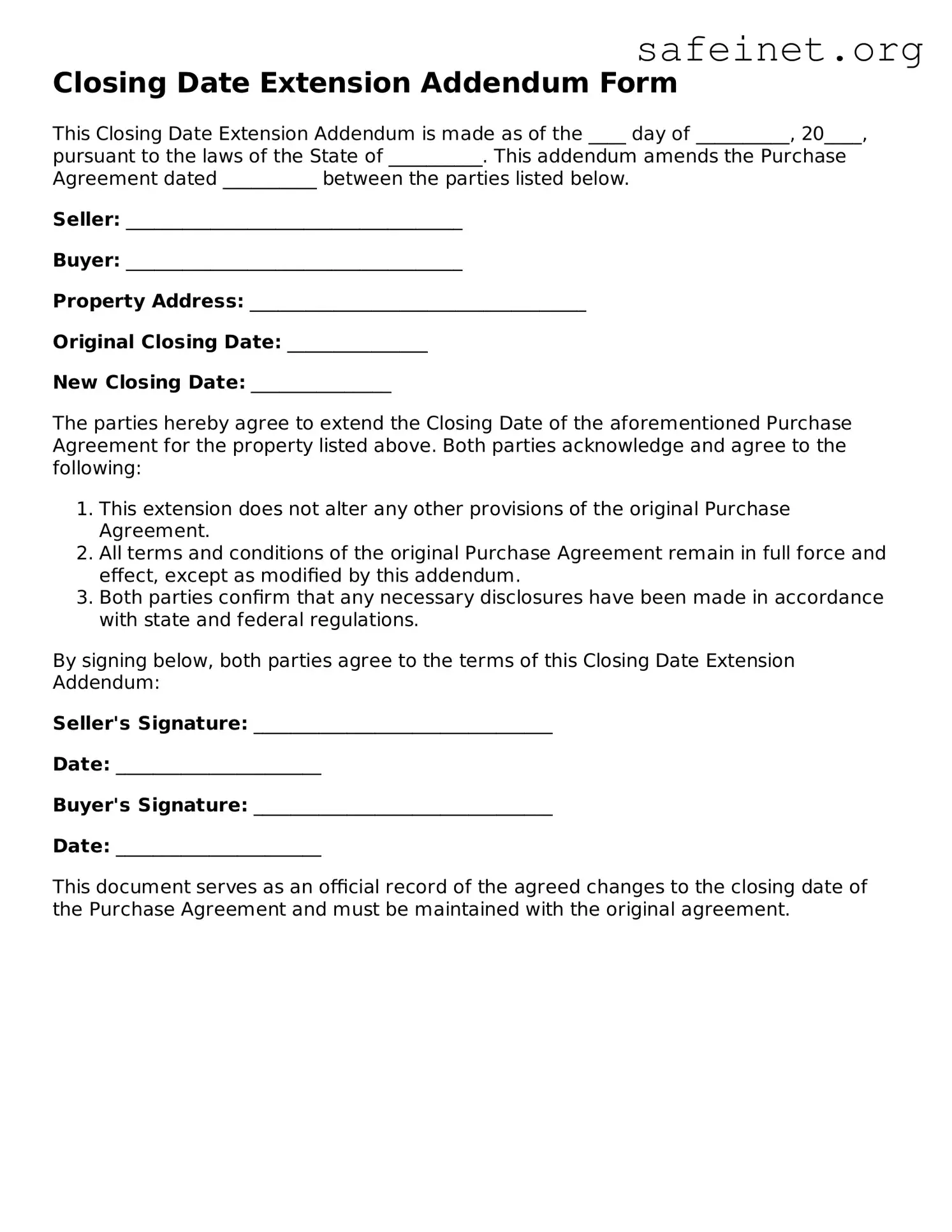Closing Date Extension Addendum Form
This Closing Date Extension Addendum is made as of the ____ day of __________, 20____, pursuant to the laws of the State of __________. This addendum amends the Purchase Agreement dated __________ between the parties listed below.
Seller: ____________________________________
Buyer: ____________________________________
Property Address: ____________________________________
Original Closing Date: _______________
New Closing Date: _______________
The parties hereby agree to extend the Closing Date of the aforementioned Purchase Agreement for the property listed above. Both parties acknowledge and agree to the following:
- This extension does not alter any other provisions of the original Purchase Agreement.
- All terms and conditions of the original Purchase Agreement remain in full force and effect, except as modified by this addendum.
- Both parties confirm that any necessary disclosures have been made in accordance with state and federal regulations.
By signing below, both parties agree to the terms of this Closing Date Extension Addendum:
Seller's Signature: ________________________________
Date: ______________________
Buyer's Signature: ________________________________
Date: ______________________
This document serves as an official record of the agreed changes to the closing date of the Purchase Agreement and must be maintained with the original agreement.
